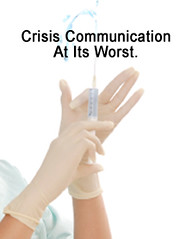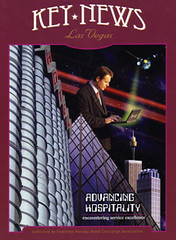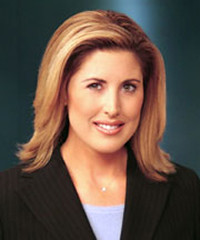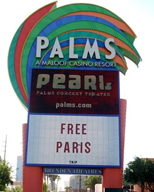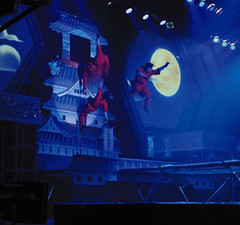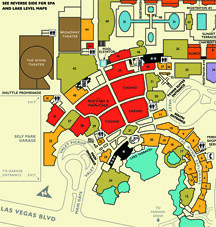Sometimes a crisis communication checklist is not enough. The Endoscopy Center of Southern Nevada is attempting to apply some practices, but the message is failing to resonate. I’m not surprised.
This is the largest hepatitis C scare in the history of the country.
The Endoscopy Center of Southern Nevada was reportedly using single dose vials of medication, which had become infected with hepatitis C, a potentially fatal blood-borne virus, through their initial use and were used again. Hepatitis C is not the only potential infection that could have been spread.
The Southern Nevada Health District is asking some 40,000 patients who had procedures requiring injected anesthesia at the clinic between March 2004 and January 11, 2008, to contact their primary care physicians or health care providers to get tested for hepatitis C as well as hepatitis B and HIV. Given the transient nature of Las Vegas, it is nearly impossible to tell how many of these patients have moved out of the area or have been living with an infection for years.
The reality and gravity of the situation is severe enough that the statement released to the media by the Endoscopy Center of Southern Nevada fails to exhibit even a basic understanding of crisis communication, considering the severity of the issue.
“On behalf of the Endoscopy Center of Southern Nevada, we want to express our deep concern about this incident to the many patients who have put their trust in us over the years. As always, our patients remain our primary responsibility and we have already corrected the situation.”
Obviously not. If patients were the primary responsibility, this would have never happened. How could anyone even think such a statement was appropriate to include as a patient care message during a press conference that addressed wrongdoing of the worst kind — reusing single dose vials is widely known to pass infection.
The statement goes on to say things like “In addition to our corrective actions, we are on a mission to maintain the trust our patients have had in us during our years of service to southern Nevada.” They must be joking. And, unbelievably, they attempted to play the legal counsel card — pending class action suits already being organized and a criminal investigation — to limit their comments and refuse to take reporters’ questions. Unbelievable.
If you break off communication with the media during a severe crisis, they will have no alternative but to seek other sources. Every media outlet covering the story is doing exactly that.
According to the Las Vegas Sun today, several doctors unaffiliated with the Endoscopy Center of Southern Nevada have surmised that the clinic appeared to put profits ahead of patient care, directing staff to cut corners in order to accommodate the high volume of patients. The procedures were performed by certified nurse-anesthetists, with apparently no one at the practice willing to step up and say what they were doing was wrong.
These practices continued until the Southern Nevada Health District identified six cases of hepatitis C, five of which stemmed from the Endoscopy Center of Nevada. While the center continues to stress that the actual risk of anyone being affected by this is extremely low, it seems to be little consolation for the individuals. Elected officials are already calling for the removal of the clinic’s license.
This crisis has already been mishandled to the point of no return.
In such extreme cases, one might ask if the clinic is worth saving. While this could be debated endlessly, I’d rather focus on what they did wrong from a communication standpoint, which made this unrecoverable.
They are attempting to apply a truncated crisis communication formula frequently employed by public relations professionals who have little real world experience. Worse, they are being selective in which ones they are using — the statement doesn’t even include an apology, possibly for fear of admitting criminal negligence.
Look, crisis communication is a process and not a formula. You can come forward, apologize, explain the incident, address corrective measures, seek outside consult, promise it will never happen again, and perhaps demonstrate some measure of empathy (I was told the owner appeared empathetic at the press conference) all you want. But it won’t change gross negligence.
What the crisis communication team needed to consider.
• The clinic needed to come forward sooner and explain precisely what occurred and why it occurred, regardless of potential civil and criminal cases. If the crisis was caused by placing profits before patients as some speculate, an admission is appropriate.
• The clinic needed to apologize, at minimum, to the five people likely infected with hepatitis C by its procedures and offer immediate restitution. It further needed to voluntarily pay for a proactive location and testing of all 40,000 patients as well as family members that may have been affected as a result.
• The clinic needed to maintain an open door policy to address all concerns and questions from the media and other stakeholders, regardless of personal jeopardy, as personal and public safety remain at risk.
• The clinic needs to verbalize empathy, sympathy, and embarrassment over its procedural practices without any trite statements revolving around preserving patient trust and promises that it will never happen again. It would seem more logical for the clinic to voluntarily dedicate 100 percent of its resources to the crisis.
• Dipak Desai, medical director and majority shareholder in the practice, needs to step forward as his own spokesperson and promise to step down immediately after overseeing restitution to the victims. Desai also needs to fully cooperate with all investigations and help determine which doctors and nurses were engaged in these procedures or knew about the procedures but neglected to speak up.
All this should have already happened. However, it did not. Given the severity of the crisis and the initial handing, it’s likely this will be unrecoverable. And frankly, despite placing it in the living case study slot, maybe that is for the best if it does not recover.

This is the largest hepatitis C scare in the history of the country.
The Endoscopy Center of Southern Nevada was reportedly using single dose vials of medication, which had become infected with hepatitis C, a potentially fatal blood-borne virus, through their initial use and were used again. Hepatitis C is not the only potential infection that could have been spread.
The Southern Nevada Health District is asking some 40,000 patients who had procedures requiring injected anesthesia at the clinic between March 2004 and January 11, 2008, to contact their primary care physicians or health care providers to get tested for hepatitis C as well as hepatitis B and HIV. Given the transient nature of Las Vegas, it is nearly impossible to tell how many of these patients have moved out of the area or have been living with an infection for years.
The reality and gravity of the situation is severe enough that the statement released to the media by the Endoscopy Center of Southern Nevada fails to exhibit even a basic understanding of crisis communication, considering the severity of the issue.
“On behalf of the Endoscopy Center of Southern Nevada, we want to express our deep concern about this incident to the many patients who have put their trust in us over the years. As always, our patients remain our primary responsibility and we have already corrected the situation.”
Obviously not. If patients were the primary responsibility, this would have never happened. How could anyone even think such a statement was appropriate to include as a patient care message during a press conference that addressed wrongdoing of the worst kind — reusing single dose vials is widely known to pass infection.
The statement goes on to say things like “In addition to our corrective actions, we are on a mission to maintain the trust our patients have had in us during our years of service to southern Nevada.” They must be joking. And, unbelievably, they attempted to play the legal counsel card — pending class action suits already being organized and a criminal investigation — to limit their comments and refuse to take reporters’ questions. Unbelievable.
If you break off communication with the media during a severe crisis, they will have no alternative but to seek other sources. Every media outlet covering the story is doing exactly that.
According to the Las Vegas Sun today, several doctors unaffiliated with the Endoscopy Center of Southern Nevada have surmised that the clinic appeared to put profits ahead of patient care, directing staff to cut corners in order to accommodate the high volume of patients. The procedures were performed by certified nurse-anesthetists, with apparently no one at the practice willing to step up and say what they were doing was wrong.
These practices continued until the Southern Nevada Health District identified six cases of hepatitis C, five of which stemmed from the Endoscopy Center of Nevada. While the center continues to stress that the actual risk of anyone being affected by this is extremely low, it seems to be little consolation for the individuals. Elected officials are already calling for the removal of the clinic’s license.
This crisis has already been mishandled to the point of no return.
In such extreme cases, one might ask if the clinic is worth saving. While this could be debated endlessly, I’d rather focus on what they did wrong from a communication standpoint, which made this unrecoverable.
They are attempting to apply a truncated crisis communication formula frequently employed by public relations professionals who have little real world experience. Worse, they are being selective in which ones they are using — the statement doesn’t even include an apology, possibly for fear of admitting criminal negligence.
Look, crisis communication is a process and not a formula. You can come forward, apologize, explain the incident, address corrective measures, seek outside consult, promise it will never happen again, and perhaps demonstrate some measure of empathy (I was told the owner appeared empathetic at the press conference) all you want. But it won’t change gross negligence.
What the crisis communication team needed to consider.
• The clinic needed to come forward sooner and explain precisely what occurred and why it occurred, regardless of potential civil and criminal cases. If the crisis was caused by placing profits before patients as some speculate, an admission is appropriate.
• The clinic needed to apologize, at minimum, to the five people likely infected with hepatitis C by its procedures and offer immediate restitution. It further needed to voluntarily pay for a proactive location and testing of all 40,000 patients as well as family members that may have been affected as a result.
• The clinic needed to maintain an open door policy to address all concerns and questions from the media and other stakeholders, regardless of personal jeopardy, as personal and public safety remain at risk.
• The clinic needs to verbalize empathy, sympathy, and embarrassment over its procedural practices without any trite statements revolving around preserving patient trust and promises that it will never happen again. It would seem more logical for the clinic to voluntarily dedicate 100 percent of its resources to the crisis.
• Dipak Desai, medical director and majority shareholder in the practice, needs to step forward as his own spokesperson and promise to step down immediately after overseeing restitution to the victims. Desai also needs to fully cooperate with all investigations and help determine which doctors and nurses were engaged in these procedures or knew about the procedures but neglected to speak up.
All this should have already happened. However, it did not. Given the severity of the crisis and the initial handing, it’s likely this will be unrecoverable. And frankly, despite placing it in the living case study slot, maybe that is for the best if it does not recover.






